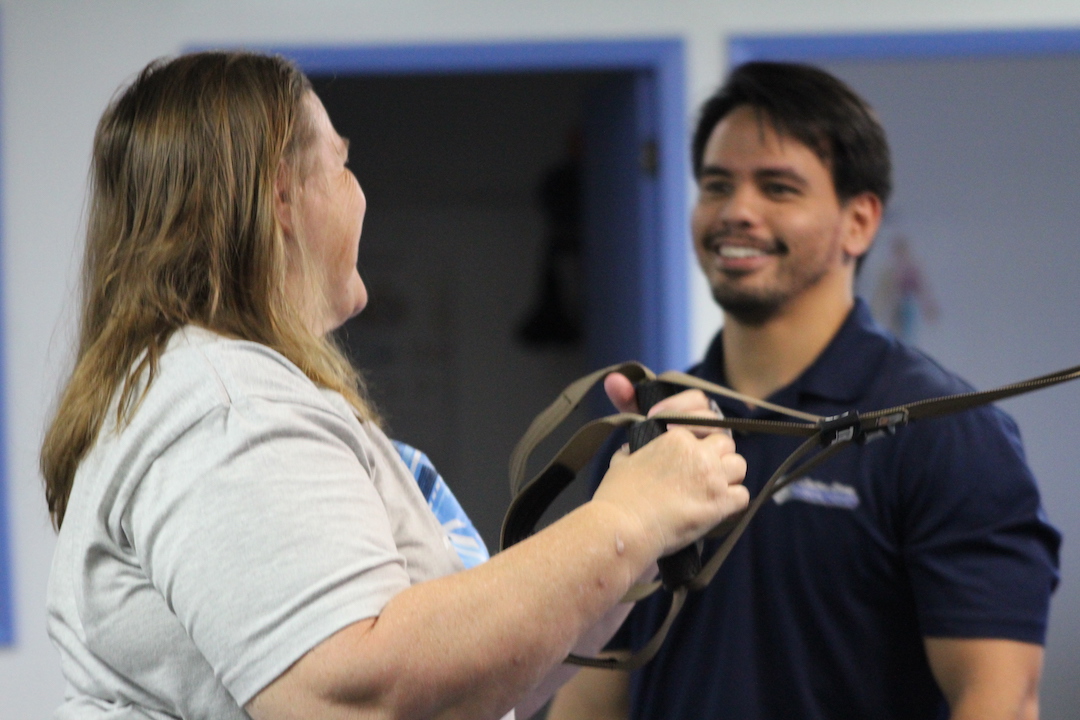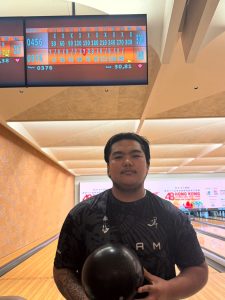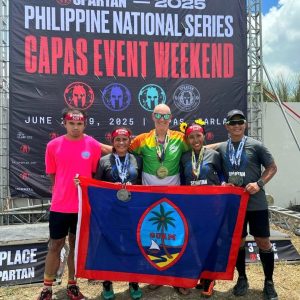
By Brandon Kinsella
While the rigorous part of being an athlete occurs during the 5 am practices, sprinting suicides and learning strategy for the season, or during the process of pushing to gain new personal records bench pressing and squatting; another crucial aspect that is equally as important, and not stressed enough, is the recovery process.
We sat down with Dr. Ryan Claros, physical therapist and wellness instructor at Custom Fitness Physical Therapy, to discuss the process of recovery, the precautions that athletes should take to stay healthy, and the habits that could help improve athletic performance and longevity in any sport.
Recovery Defined
Now what exactly is recovery, and how important is it?
Recovery deals with a variety of methods including stretching, a good diet, and an ideal amount of sleep. Each of these methods is crucial in keeping an athlete healthy and helps to increase an athlete’s longevity and limit the chances of injury.
The process of recovery starts with?
“Consistency.”
Whether it be a consistent diet, stretching, or sleep. Each of these factors pay dividends in the long run for your health as an athlete.
The Breakdown
The first recovery method that we discussed with Dr. Claros was stretching. Claros elaborated on what can happen when an athlete does not stretch and why every athlete should incorporate stretching into their routine.
“A big reason why injuries occur is because people tend to focus on (injuries) when they’re already too far gone. The muscle is already too tight when people decide to start stretching and the pain is chronic. Integrating stretching either before or after a workout for just 5-10 minutes significantly decreases the chances of injuries and is something that all athletes should include into their routine.”
Without stretching, muscles become tight and puts athletes at risk for strains and muscle damage.
Of course, another crucial aspect of the recovery process is an ideal diet. Dr. Claros discussed diet but focused primarily on the importance of balancing calorie intake and output. Diet is a very broad topic, especially because it varies by person and by the type of athletic activity being performed.
“An ideal diet is dependent on the individual and the type of sport. In terms of diet, the biggest mistake people make is overestimating the amount of calories they burn and underestimating the amount of calories they consume.”
He gave an analogy of a runner that just finished a 5k.
“Think of the first place people go to after a 5k? … It’s probably a Denny’s, King’s, or Shirley’s. Not that there is anything wrong with these restaurants, but the runner will typically end up ordering a meal that equals around 1000-1500 calories. And in the runner’s mind, they deserve this meal. They think that they just burned the equivalent of 1000-1500 calories after running the 5k, but in reality, most of the time spent ‘running’ was actually jogging or walking; and they might have only burned around 400-500 calories.”
“Finding the balance between calorie output and intake is one of the biggest challenges in eating healthy, but doing so is the first step to creating an ideal diet.”
It is important to the recovery process to be aware of the number of calories that you are burning and consuming. But also, to take into consideration the amount of carbs, protein, and fat input. These percentages vary on the type of person and the type of sport.
For example, a cross country athlete might need to incorporate a higher percentage of carbs than a person playing a different sport. An array of diet percentages for preferred sports and body types can be found online.
“Regardless of how hard people exercise… You can’t beat a bad diet. That is the honest truth.”
The last recovery method and arguably the most underestimated is sleep.
“Sleep is so crucial to the body, and it is something that people often disregard in the back of their mind. There have been studies that show that if you don’t get 8 hours of sleep, you have a 20% risk of injury. And that’s significantly high.”
This can be one of the more difficult habits to develop, especially for young athletes. But it is a vital aspect to recovery. Staying consistent with sleep not only gives you more energy for the rigorous parts of being an athlete, but also helps to reduce stress and blood pressure.
‘Preventing’ Injuries
In retrospect, there is no way to prevent injuries. Injuries happen spontaneously. But there are ways to limit the chances of injury by developing healthy habits and also seeking out an assessment from a professional to determine which muscles are lacking strength.
“There’s nothing we can do to prevent injuries per se. But there’s things we can do to predict injuries. A common indicator for predicting injuries is previous soreness or previous strains.”
Say for instance an athlete injures their knee, and they are aware of the severity and the pain. Instead of taking it easy, they take medication to avoid the pain and continue running with the injured knee. With that circumstance, the athlete has a high probability of making the minor sprain severe because they left it untreated.
“Being able to predict injuries can also start with seeking a professional for an assessment. If an athlete sought an assessment and was aware that their left leg is weaker than their right, for instance, then building strength on the weak leg could help limit the chances of injury in the future per se.”

Dr. Claros works out with high school athlete Brennan King on injury prevention. (photo by Robert Balajadia)
Misconception on the Recovery Process
A common misconception of the recovery process is that ‘resting’ is beneficial to an athlete after an injury. There is truth to this statement, but resting for too long leads to inactivity, and without the right movement, the muscle will never recover properly.
This is why it is so crucial that athletes seek a professional whenever they sense that the injury is serious, to assure proper healing and to prevent an injury from becoming more serious than it needs to be.
When to Seek Help
When can athletes know whether to keep playing?
“Generally, athletes should gauge pain on a 1-10 scale. If they can play at a 4 without harming their performance, then it would be considered okay to continue playing.”
When should an athlete seek a professional?
“If it comes to a certain point when an athlete must take medication before their preferred sport, for every event, that is a sign to seek help from a professional. If a muscle is sore for more than four days, that is also a sign to seek help from a professional. Lastly, if an athlete cannot play without a brace, this would also be a sign to seek help from a professional.”
Claros simplified the four-day rule, though, because it can be confusing.
“Generally, after an intense workout, people tend to be sore for two days. If after those two days they work the same muscle and become sore again, this would not follow the four-day rule.”
Seeing the Right Professional
Dr. Claros also stressed what type of professional an athlete should see in the event of an injury.
“It is also important to distinguish what type of professional you need to see for the injury that you have. When a person has back pain, for instance, usually the first place they go is the chiropractor. Then they go on to have monthly or even weekly appointments. And I do respect the practice of chiropractors… But when a person is visiting the chiropractor every week, it’s almost like having the same problems with your car and going to your mechanic to get that same problem fixed every week. And that is an issue.”
“When a person sees a physical therapist or a sports doctor, they can begin to understand what is going on with their body, and they can be treated properly. In addition, they can learn how to treat themselves at home – through simple stretching and exercises. This way they can be on their way to a full recovery.”
Which Sport has the Most Injuries?
In which sport have you personally seen the greatest amount of injuries?
“Soccer. Soccer is such a dynamic sport with complex movements and sharp turns. A lot of times athletes are running nonstop for the duration of the match and do not take necessary precautions before playing the game.”
What could soccer players do to better prepare themselves for the complex movements encountered in soccer?
“The buildup and preparation to playing soccer is crucial in limiting injury. For the older population that is involved in the sport, we see people that recreationally play the sport and don’t practice or prepare for the dynamic movements. In terms of the younger population, overuse injuries are more likely to occur. And this happens because a lot of these young athletes play soccer for their school, as well as for their outside clubs, and occasionally at school during their lunch breaks. Not only are they playing games, but they are practicing 3-5 days a week…
“But it’s not that soccer is to blame. It is more so, that communication needs to be more fluent, between players, club coaches, and high school coaches, to ensure that young athletes are not overworking their bodies.”
Offseason Training
What can athletes do to improve their performance and how does it relate to the recovery process?
“I think that all athletes should be more adept at preparing themselves for a sport. The idea of just playing your sport to get fit is illogical. The use of an offseason to get stronger and develop skills, points back to the idea of ‘preventable injuries.’ The offseason is also where athletes can get their assessments and gauge which muscles are lacking, or uneven in strength and where they need to improve. Everyone should have some sort of offseason strength and conditioning program, whether at home or at a gym.”
About Dr. Claros
- Doctor of Physical Therapy, University of Saint Augustine for Health Sciences
- M.S Exercise Physiology, San Diego State University
- B.S Kinesiology with emphasis in Fitness, Nutrition and Health, San Diego State University


GPS Sports Calendar
July 2025
- SU
- MO
- TU
- WE
- TH
- FR
- SA
Events for June
1st
FD ALUMNI BASKETBALL TOURNAMENT
2025 PACIFIC MINI GAMES
Events for July
2nd
FD ALUMNI BASKETBALL TOURNAMENT
2025 PACIFIC MINI GAMES
Events for July
3rd
FD ALUMNI BASKETBALL TOURNAMENT
2025 PACIFIC MINI GAMES
Events for July
4th
FD ALUMNI BASKETBALL TOURNAMENT
FD ALUMNI BASKETBALL TOURNAMENT
2025 PACIFIC MINI GAMES
Events for July
5th
FD ALUMNI BASKETBALL TOURNAMENT
FD ALUMNI BASKETBALL TOURNAMENT
2025 PACIFIC MINI GAMES
Events for July
6th
FD ALUMNI BASKETBALL TOURNAMENT
FD ALUMNI BASKETBALL TOURNAMENT
2025 PACIFIC MINI GAMES
Events for July
7th
FD ALUMNI BASKETBALL TOURNAMENT
FD ALUMNI BASKETBALL TOURNAMENT
2025 PACIFIC MINI GAMES
Events for July
8th
FD ALUMNI BASKETBALL TOURNAMENT
FD ALUMNI BASKETBALL TOURNAMENT
2025 PACIFIC MINI GAMES
Events for July
9th
FD ALUMNI BASKETBALL TOURNAMENT
FD ALUMNI BASKETBALL TOURNAMENT
2025 PACIFIC MINI GAMES
Events for July
10th
FD ALUMNI BASKETBALL TOURNAMENT
FD ALUMNI BASKETBALL TOURNAMENT
Events for July
11th
- 13
- 14
- 15
- 16
- 17
- 18
- 19
Events for July
12th
Events for July
13th
Events for July
14th
Events for July
15th
Events for July
16th
Events for July
17th
Events for July
18th
- 20
- 21
- 22
- 23
- 24
- 25
- 26
Events for July
19th
Events for July
20th
Events for July
21st
Events for July
22nd
Events for July
23rd
Events for July
24th
Events for July
25th
- 27
- 28
- 29
- 30
- 31
- 1
- 2
Events for July
26th
Events for July
27th
Events for July
28th
Events for July
29th
Events for July
30th

Pacific Mini Games
SOFTBALL COMES UP BIG OVER PALAU 11-4

Volleyball
GUAHAN BOYS WIN NATIONAL CLUB CHAMPIONSHIP

Pacific Mini Games
BASEBALL ADVANCES TO GOLD MEDAL GAME

Pacific Mini Games
PMG DAY 2: GUAM STILL SEARCHES FOR FIRST MEDAL

Jiu-Jitsu
CRUZ BROS. CRUISE THROUGH STATESIDE COMP

Pacific Mini Games
WATER SPORTS KICKS THINGS OFF IN DAY 1

Basketball
YI NAMED NEW UOG BASKETBALL COACH

Pacific Mini Games
KENT GETS GOLD IN 10K, AS EXPECTED
COMING SOON …
FD Alumni Basketball Tournament June 27-July 18
Pacific Mini Games June 29-July 9
QUICK HITS





















